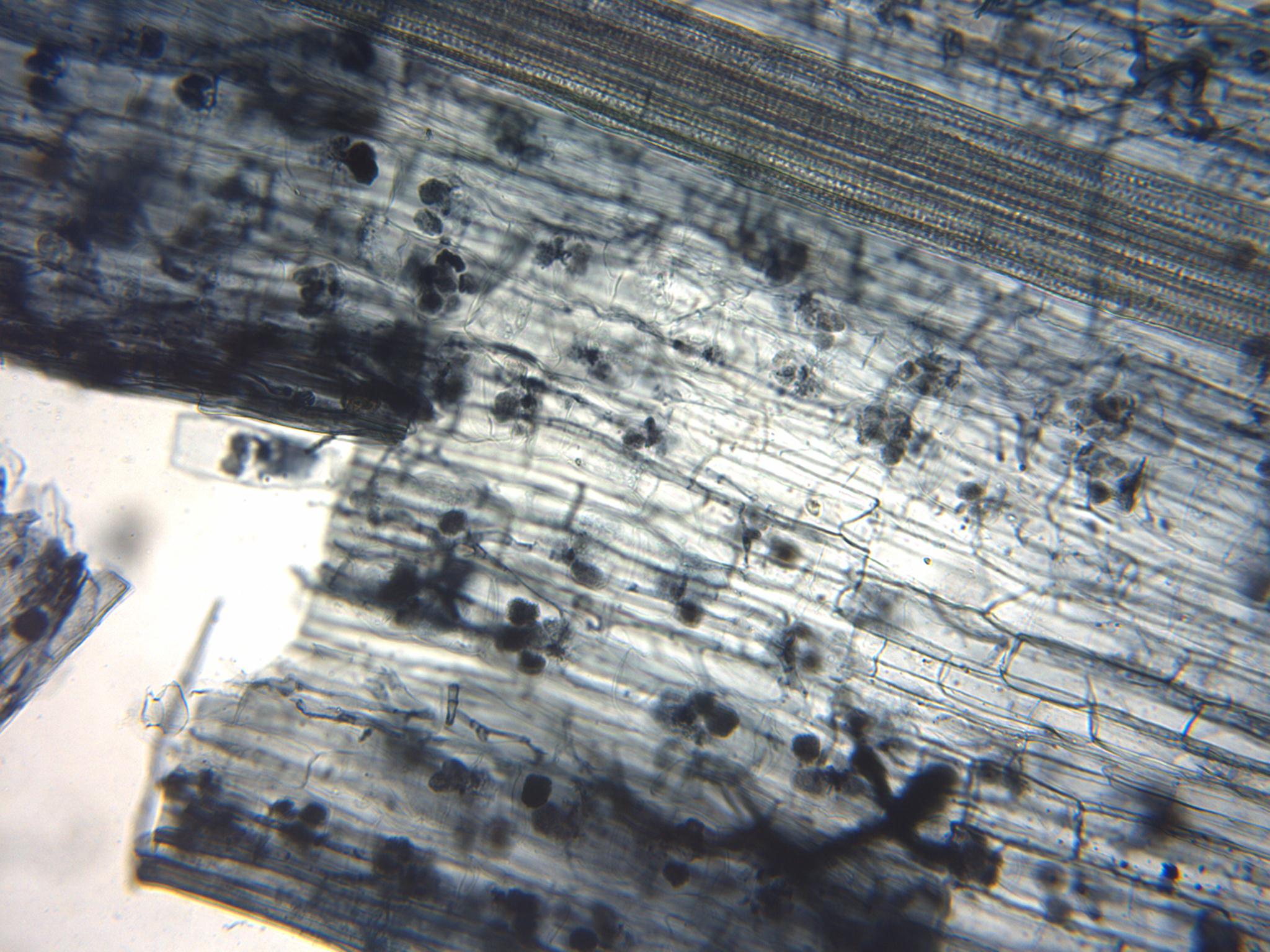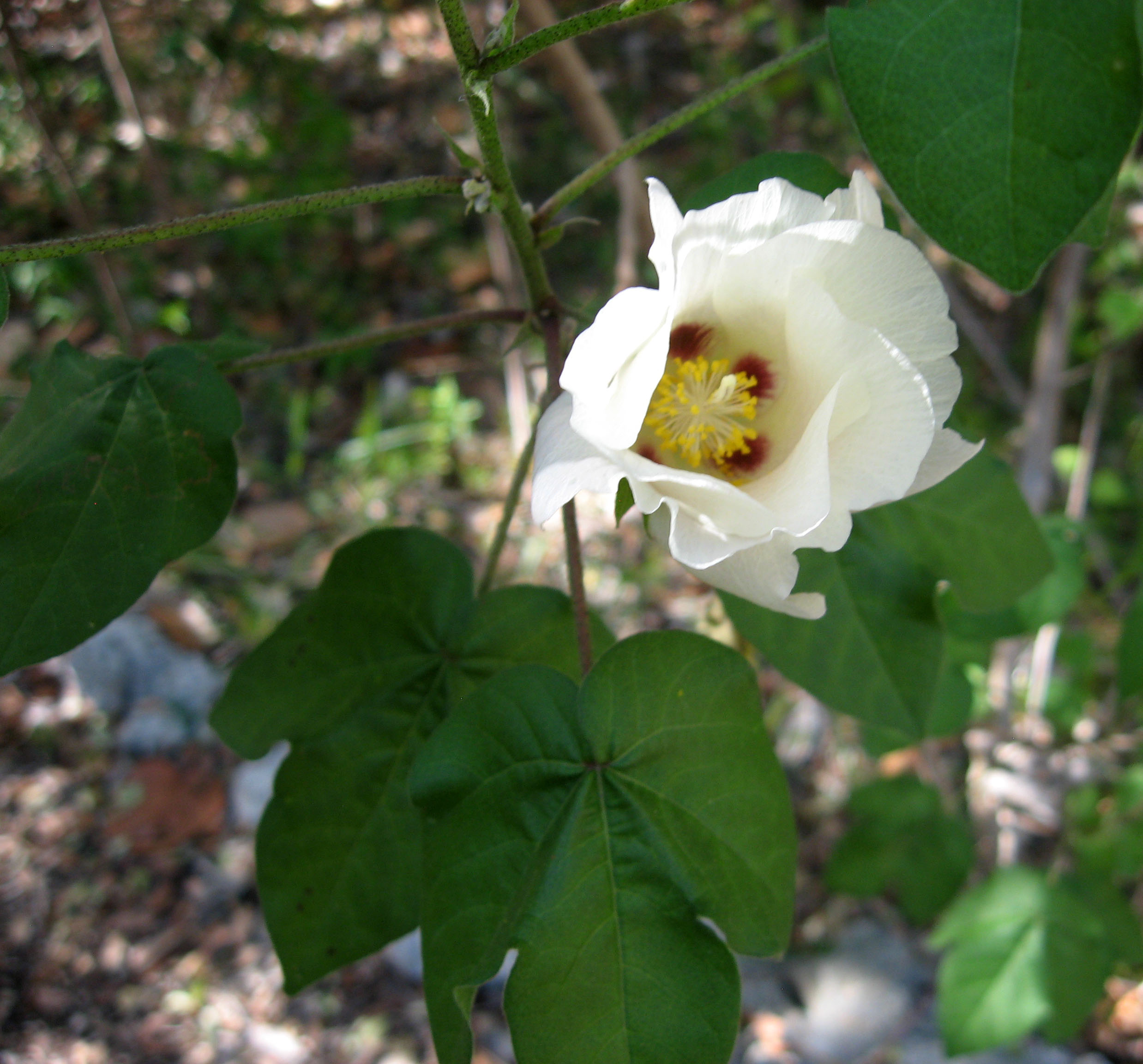|
Rhizophagus Clarus
''Rhizophagus clarus'' (previously known as ''Glomus clarum'') is an arbuscular mycorrhizal fungus in the family Glomeraceae. The species has been shown to improve nutrient absorption and growth in several agricultural crops but is not typically applied commercially. Distribution and conservation ''Rhizophagus clarus'' is widely distributed and found worldwide. The species is proposed to be at the level of Least Concern on the IUCN Red List due to its global distribution. Spores and morphology The spores of ''Rhizophagus clarus'' vary in color from white to yellow-brown. They naturally vary in size from 100 to 260 µm and are globose to subglobose in shape. The spores are larger than the spores of other species in the genus Rhizophagus. The spores are composed of an outer mucilaginous layer which thickens as they mature. ''Rhizophagus clarus'' is composed of extraradical hyphae that extend past the rhizosphere soil zone, and intraradical hyphae that inhabit the host ... [...More Info...] [...Related Items...] OR: [Wikipedia] [Google] [Baidu] |
Arbuscular Mycorrhiza
An arbuscular mycorrhiza (AM) (plural ''mycorrhizae'', a.k.a. ''endomycorrhiza'') is a type of mycorrhiza in which the symbiont fungus (''AM fungi'', or AMF) penetrates the cortical cells of the roots of a vascular plant forming arbuscules. (Not to be confused with ectomycorrhiza or ericoid mycorrhiza.) Arbuscular mycorrhizae are characterized by the formation of unique structures, arbuscules and vesicles, by Glomeromycota and Mucoromycota, sister clades of the more well-known and diverse dikaryan fungi (all three are together called "symbiomycota"). AM fungi help plants to capture nutrients such as phosphorus, sulfur, nitrogen and micronutrients from the soil. It is believed that the development of the arbuscular mycorrhizal symbiosis played a crucial role in the initial colonisation of land by plants and in the evolution of the vascular plants. It has been said that it is quicker to list the plants that do not form endomycorrhizae than those that do. This symbiosis is a ... [...More Info...] [...Related Items...] OR: [Wikipedia] [Google] [Baidu] |
Glomeraceae
The ''Glomeraceae'' are a family of arbuscular mycorrhizal (AM) fungi that form symbiotic relationships (mycorrhizas) with plant roots. The family was circumscribed In geometry, the circumscribed circle or circumcircle of a polygon is a circle that passes through all the vertices of the polygon. The center of this circle is called the circumcenter and its radius is called the circumradius. Not every po ... in 1989. References Fungus families Glomerales {{Glomeromycota-stub ... [...More Info...] [...Related Items...] OR: [Wikipedia] [Google] [Baidu] |
IUCN Red List
The International Union for Conservation of Nature (IUCN) Red List of Threatened Species, also known as the IUCN Red List or Red Data Book, founded in 1964, is the world's most comprehensive inventory of the global conservation status of biological species. It uses a set of precise criteria to evaluate the extinction risk of thousands of species and subspecies. These criteria are relevant to all species and all regions of the world. With its strong scientific base, the IUCN Red List is recognized as the most authoritative guide to the status of biological diversity. A series of Regional Red Lists are produced by countries or organizations, which assess the risk of extinction to species within a political management unit. The aim of the IUCN Red List is to convey the urgency of conservation issues to the public and policy makers, as well as help the international community to reduce species extinction. According to IUCN the formally stated goals of the Red List are to provide ... [...More Info...] [...Related Items...] OR: [Wikipedia] [Google] [Baidu] |
Rhizophagus (fungus)
''Rhizophagus'' is a genus of arbuscular mycorrhizal (AM) fungi that form symbiotic relationships (mycorrhizas) with plant roots. The genome of ''Rhizophagus irregularis'' (formerly ''Glomus intraradices'') was recently sequenced In genetics and biochemistry, sequencing means to determine the primary structure (sometimes incorrectly called the primary sequence) of an unbranched biopolymer. Sequencing results in a symbolic linear depiction known as a sequence which succi .... References Glomerales Fungus genera Taxa described in 1896 {{glomeromycota-stub ... [...More Info...] [...Related Items...] OR: [Wikipedia] [Google] [Baidu] |
Hypha
A hypha (; ) is a long, branching, filamentous structure of a fungus, oomycete, or actinobacterium. In most fungi, hyphae are the main mode of vegetative growth, and are collectively called a mycelium. Structure A hypha consists of one or more cells surrounded by a tubular cell wall. In most fungi, hyphae are divided into cells by internal cross-walls called "septa" (singular septum). Septa are usually perforated by pores large enough for ribosomes, mitochondria, and sometimes nuclei to flow between cells. The major structural polymer in fungal cell walls is typically chitin, in contrast to plants and oomycetes that have cellulosic cell walls. Some fungi have aseptate hyphae, meaning their hyphae are not partitioned by septa. Hyphae have an average diameter of 4–6 µm. Growth Hyphae grow at their tips. During tip growth, cell walls are extended by the external assembly and polymerization of cell wall components, and the internal production of new cell membran ... [...More Info...] [...Related Items...] OR: [Wikipedia] [Google] [Baidu] |
Mutualism (biology)
Mutualism describes the ecological interaction between two or more species where each species has a net benefit. Mutualism is a common type of ecological interaction. Prominent examples include most vascular plants engaged in mutualistic interactions with mycorrhizae, flowering plants being pollinated by animals, vascular plants being dispersed by animals, and corals with zooxanthellae, among many others. Mutualism can be contrasted with interspecific competition, in which each species experiences ''reduced'' fitness, and exploitation, or parasitism, in which one species benefits at the expense of the other. The term ''mutualism'' was introduced by Pierre-Joseph van Beneden in his 1876 book ''Animal Parasites and Messmates'' to mean "mutual aid among species". Mutualism is often conflated with two other types of ecological phenomena: cooperation and symbiosis. Cooperation most commonly refers to increases in fitness through within-species (intraspecific) interactions, a ... [...More Info...] [...Related Items...] OR: [Wikipedia] [Google] [Baidu] |
Photoassimilate
In botany, a photoassimilate is one of a number of biological compounds formed by assimilation using light-dependent reactions. This term is most commonly used to refer to the energy-storing monosaccharides produced by photosynthesis in the leaves of plants. Only NADPH, ATP and water are made in the "light" reactions. Monosaccharides, though generally more complex sugars, are made in the "dark" reactions. The term "light" reaction can be confusing as some "dark" reactions require light to be active. Photoassimilate movement through plants from "source to sink" using xylem and phloem is of biological significance. This movement is mimicked by many infectious particles - namely viroid Viroids are small single-stranded, circular RNAs that are infectious pathogens. Unlike viruses, they have no protein coating. All known viroids are inhabitants of angiosperms (flowering plants), and most cause diseases, whose respective econo ...s - to accomplish long ranged movement and consequ ... [...More Info...] [...Related Items...] OR: [Wikipedia] [Google] [Baidu] |
Symbiosis
Symbiosis (from Greek , , "living together", from , , "together", and , bíōsis, "living") is any type of a close and long-term biological interaction between two different biological organisms, be it mutualistic, commensalistic, or parasitic. The organisms, each termed a symbiont, must be of different species. In 1879, Heinrich Anton de Bary defined it as "the living together of unlike organisms". The term was subject to a century-long debate about whether it should specifically denote mutualism, as in lichens. Biologists have now abandoned that restriction. Symbiosis can be obligatory, which means that one or more of the symbionts depend on each other for survival, or facultative (optional), when they can generally live independently. Symbiosis is also classified by physical attachment. When symbionts form a single body it is called conjunctive symbiosis, while all other arrangements are called disjunctive symbiosis."symbiosis." Dorland's Illustrated Medical Dictionary ... [...More Info...] [...Related Items...] OR: [Wikipedia] [Google] [Baidu] |
Fragaria X Ananassa
The garden strawberry (or simply strawberry; ''Fragaria × ananassa'') is a widely grown hybrid species of the genus ''Fragaria'', collectively known as the strawberries, which are cultivated worldwide for their fruit. The fruit is widely appreciated for its characteristic aroma, bright red color, juicy texture, and sweetness. It is consumed in large quantities, either fresh or in such prepared foods as jam, juice, pies, ice cream, milkshakes, and chocolates. Artificial strawberry flavorings and aromas are also widely used in products such as candy, soap, lip gloss, perfume, and many others. The garden strawberry was first bred in Brittany, France, in the 1750s via a cross of ''Fragaria virginiana'' from eastern North America and ''Fragaria chiloensis'', which was brought from Chile by Amédée-François Frézier in 1714. Cultivars of ''Fragaria'' × ''ananassa'' have replaced, in commercial production, the woodland strawberry (''Fragaria vesca''), which was the first strawber ... [...More Info...] [...Related Items...] OR: [Wikipedia] [Google] [Baidu] |
Zea Mays
Maize ( ; ''Zea mays'' subsp. ''mays'', from es, maíz after tnq, mahiz), also known as corn ( North American and Australian English), is a cereal grain first domesticated by indigenous peoples in southern Mexico about 10,000 years ago. The leafy stalk of the plant produces pollen inflorescences (or "tassels") and separate ovuliferous inflorescences called ears that when fertilized yield kernels or seeds, which are fruits. The term ''maize'' is preferred in formal, scientific, and international usage as a common name because it refers specifically to this one grain, unlike ''corn'', which has a complex variety of meanings that vary by context and geographic region. Maize has become a staple food in many parts of the world, with the total production of maize surpassing that of wheat or rice. In addition to being consumed directly by humans (often in the form of masa), maize is also used for corn ethanol, animal feed and other maize products, such as corn starch a ... [...More Info...] [...Related Items...] OR: [Wikipedia] [Google] [Baidu] |
Glycine Max
Glycine (symbol Gly or G; ) is an amino acid that has a single hydrogen atom as its side chain. It is the simplest stable amino acid ( carbamic acid is unstable), with the chemical formula NH2‐ CH2‐ COOH. Glycine is one of the proteinogenic amino acids. It is encoded by all the codons starting with GG (GGU, GGC, GGA, GGG). Glycine is integral to the formation of alpha-helices in secondary protein structure due to its compact form. For the same reason, it is the most abundant amino acid in collagen triple-helices. Glycine is also an inhibitory neurotransmitter – interference with its release within the spinal cord (such as during a ''Clostridium tetani'' infection) can cause spastic paralysis due to uninhibited muscle contraction. It is the only achiral proteinogenic amino acid. It can fit into hydrophilic or hydrophobic environments, due to its minimal side chain of only one hydrogen atom. History and etymology Glycine was discovered in 1820 by the French chemist ... [...More Info...] [...Related Items...] OR: [Wikipedia] [Google] [Baidu] |
Gossypium Hirsutum
''Gossypium hirsutum'', also known as upland cotton or Mexican cotton, is the most widely planted species of cotton in the world. Globally, about 90% of all cotton production is of cultivars derived from this species. In the United States, the world's largest exporter of cotton, it constitutes approximately 95% of all cotton production. It is native to Mexico, the West Indies, northern South America, Central America and possibly tropical Florida. Archeological evidence from the Tehuacan Valley in Mexico shows the cultivation of this species as long ago as 3,500 BC, although there is as yet no evidence as to exactly where it may have been first domesticated. This is the earliest evidence of cotton cultivation in the Americas found thus far. ''Gossypium hirsutum'' includes a number of varieties or cross-bred cultivars with varying fiber lengths and tolerances to a number of growing conditions. The longer length varieties are called "long staple upland" and the shorter length varie ... [...More Info...] [...Related Items...] OR: [Wikipedia] [Google] [Baidu] |






